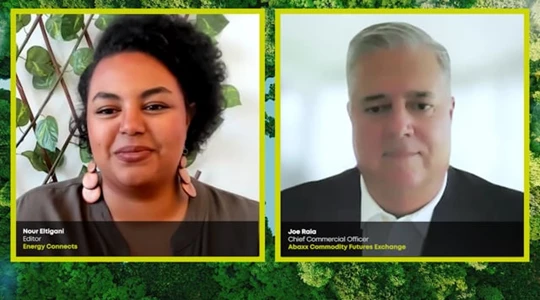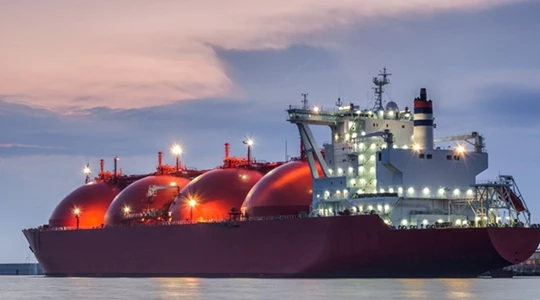Goldman Analyst Warns Wrong ESG Bets Threaten Energy Investments
(Bloomberg) -- ESG strategies have contributed to a serious decline in energy investments by focusing too much on divestment from fossil fuels and not enough on investment in renewable power sources, according to a senior researcher at Goldman Sachs Group Inc.
“The focus on decarbonization is correct, but I think it needs to be driven by more investment, not divestment,” Michele Della Vigna, Goldman’s head of natural resources research, said in an interview. “The key is to move away from divesting oil and gas towards more investment in renewables and in low carbon.”
That’s the “key issue” that the ESG community “needs to face,” he said.
The capital allocation patterns of investors targeting environmental, social and governance goals have contributed to a global lack of expenditure on energy, which has been particularly damaging to economically vulnerable corners of society, according to the Goldman analyst. He estimates that energy spending is now about 25% lower than it was between 2010 and 2014, when it was roughly $2 trillion.
BloombergNEF estimates that reaching net zero greenhouse gas emissions by the middle of this century represents an investment opportunity equivalent to almost $200 trillion, or roughly $6.7 trillion each year. By comparison, $2.1 trillion was spent in 2021, according to BloombergNEF.
Annual Energy Investment Opportunity as a Share of Global GDP
BloombergNEF has also calculated that for every $1 spent on fossil fuels, at least $4 should go to low-carbon energy supply by 2030. “Right now, the ratio is about 1:1,” said Claudio Lubis, an analyst at BloombergNEF in London. “So the key message is, instead of focusing on divestment and stopping doing things, we need to rapidly ramp up investment into low-carbon energy supply to displace fossil fuels.”
The underinvestment in the energy sector “is very concerning,” Della Vigna said. “And although energy CapEx is rising, I don’t think it’s rising fast enough to fill in the gap of 10 years of underinvestment.”
He also questioned ESG investors’ tendency to focus on absolute emissions as a guide for allocating capital, rather than emissions intensity, which measures an entity’s carbon footprint relative to its total revenue.
“Anything that pushes companies to produce less energy, like just focusing on absolute emissions, for them, I think, runs the risk of prolonging this energy crisis,” he said.
It’s a dynamic that’s coincided with decades-high inflation, rising inequality and a polarizing debate around the merits of ESG. The investment strategy’s role in shaping energy markets has become a particularly contentious issue since Russia’s invasion of Ukraine. The war has stifled energy supplies, and turned an economic cycle of low inflation and low interest rates on its head. Commodity prices soared, and ESG funds faced their worst year since the acronym was first coined roughly two decades ago.
What BloombergNEF Says...
“The concern with intensity emissions metrics is that they allow companies to keep on growing their overall carbon footprint. The measure appeals to companies that want to continue to grow their capacity. But the metric doesn’t respect the concept of the carbon budget.”
——BloombergNEF analyst Maia Godemer
Frantic efforts by European governments to wean themselves off Russian supplies have since helped drive gas prices down to pre-war levels. That’s created a sense of relief across the West, as the ripple effects of lower energy costs start to trickle through to other prices. The risk, however, is that the development leads to a lull in momentum toward the energy transition, according to Della Vigna.
“We still face a very tight gas market and I still believe it is in the interest of Europe and the rest of the world to continue to accelerate the renewable buildup as quickly as possible,” he said. “I think it’s very dangerous to be complacent here.”
Goldman Sachs expects capital expenditure on energy to rise 15% this year. But given inflation, capex should actually be as high as 30%, Della Vigna said. “What needs to happen is an acceleration of renewable spending on one side, but also normalization of the spending in hydrocarbons on the other,” he said.
That rise in spending now has a considerable tailwind in the form of the Biden administration’s Inflation Reduction Act, which was passed into law last August. Though the US government’s initial estimates indicated it would spur about $370 billion in green spending, Della Vigna says that Goldman calculations show the actual figure could be as high as $3 trillion over the coming decade.
“The Inflation Reduction Act has given extraordinary visibility on long-term returns for renewable technologies,” Della Vigna said. “That is the biggest positive development in the entire renewable space probably for the last decade.”
Europe, meanwhile, has always “been at the forefront of the clean tech innovation,” he said. But in order to stay there, “it’ll probably need to sweeten some incentives, especially in areas like green hydrogen, carbon capture, and bio energy.”
“Extending some of these incentives to broader industries and making them more consistent across the continent will make Europe more attractive and more similar to the IRA in the US,” Della Vigna said.
©2023 Bloomberg L.P.
KEEPING THE ENERGY INDUSTRY CONNECTED
Subscribe to our newsletter and get the best of Energy Connects directly to your inbox each week.
By subscribing, you agree to the processing of your personal data by dmg events as described in the Privacy Policy.
More gas & LNG news

Oman Will Seek Talks With BP, Shell to Secure Latest LNG Project

GE Vernova Sees ‘Humble’ Wind Orders as Data Centers Favor Gas

China’s Oil Demand May Peak Early on Rapid Transport Shift

Qatar Minister Calls Out EU for ESG Overreach, Compliance Costs

Chevron Slows Permian Growth in Hurdle to Trump Oil Plan

After $2.5 Billion IPO Haul, Oman’s OQ Looks at More Share Sales

ADNOC signs 15-year agreement with PETRONAS for Ruwais LNG project

Woodside signs revised EPC deal with Bechtel for Louisiana LNG

Vitol, Glencore Eye New Fortress’ Jamaica LNG Assets
















